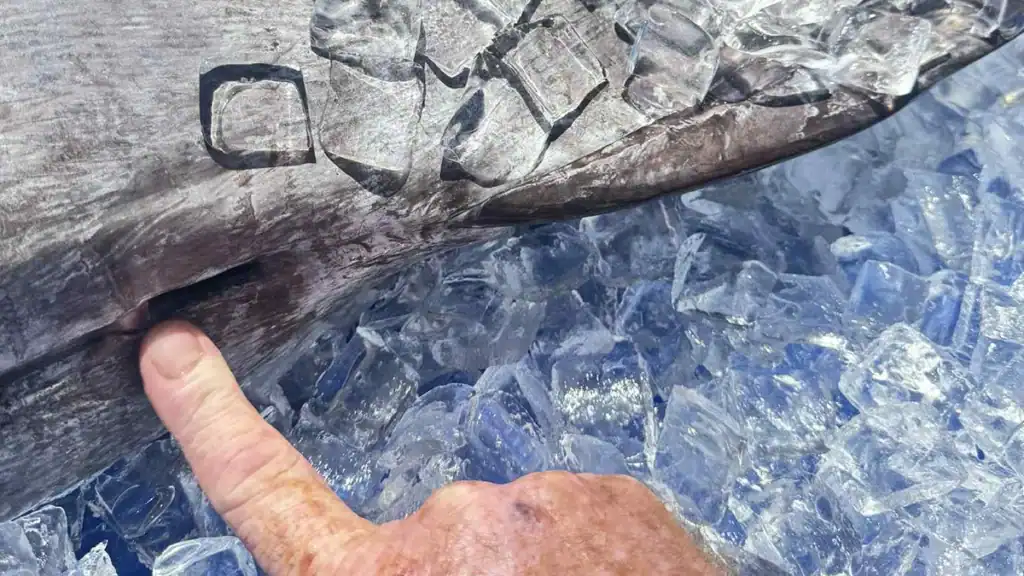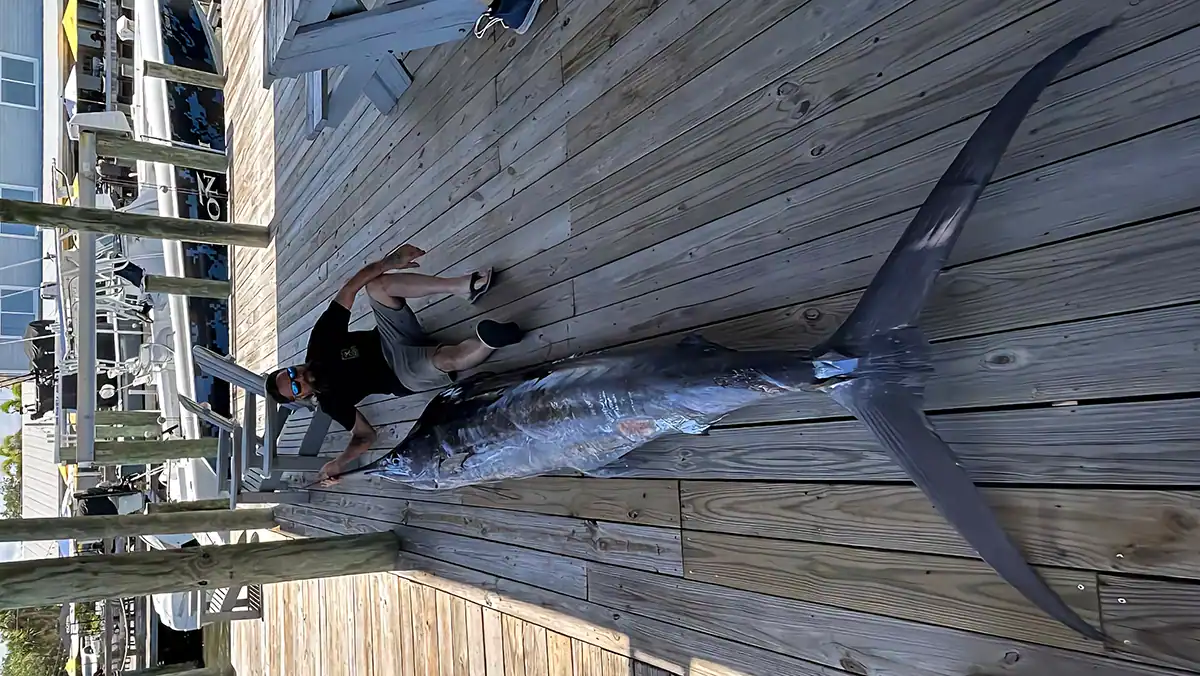Captain Sonny Richards still isn’t 100 percent certain of the exact marlin species his clients caught on Saturday, July 19. But it was a big and completely unexpected catch for the east central Florida captain. Was it a blue? Was it a white? If it was a white marlin, the fish would have broken the current IGFA all-tackle world record by nearly 45 pounds.
The Unexpected Marlin
Last month while trolling for mahi about 17 miles offshore Sebastian Inlet, that’s when the excitement started.
“We started trolling in 100 feet of water,” said Richards, of AA Fishing Charter. “We were fishing for anything and got a strike at 120 feet. The line started going off and then we lost [line pressure]. I kept teasing the fish, dropping back line and teasing the fish, and finally got the hookup. By then, there was a ton of line out.”
The fish ate a pink chugger rigged with a medium ballyhoo. Tackle setup was a Crowder 30- to 60-pound trolling rod paired with a Shimano TLD25 reel spooled with 60-pound monofilament. There was nothing special about the surface spread, just four lines trolling about 6 knots.
“My wife says, ‘Oh my gosh, look at that big sailfish jumping in front of us!’” Richards said to Wired2fish. “She just got a glimpse of it. Then, it came up again. I was like, ‘That’s a marlin!’ Then it clicked. I had dropped so much line back, the fish [was able to swim] 400 feet in front of us.”
Richards got the boat in position and brought the fish back behind them. But he knew their tackle was undergunned.
“The marlin was pulling drag so hard that it overheated the reel,” he said. “There’s a main gear in the reel that heated up so much and expanded — it cracked the housing on the reel. So our reel is basically locked up. We couldn’t turn the handle anymore. The fish is probably still at least 300 feet off the boat and we’ve been fighting it for half-an-hour.”
Angler Jason Fisher fought the fish for the majority of the fight, but everyone on the boat took turns on the reel. They were exhausted. Anticipation was so high they felt certain they were going to lose the fish. Finally, Richards had to grab the line and slowly try to ease the fish in without “waking it up too much.” He got about 15 feet of extra line in the boat. That’s when he cut the line and spliced the line to another rod. Soon, the marlin started pulling drag again, but at least they had managed to switch setups without losing the fish.
“We finally got the fish close to the boat and I saw it coming in tail-first this time,” Richards continued. “It was tail-wrapped. I said, ‘You gotta be kidding me!’ Somehow it got tail-wrapped out there. But I was able to get a rope around the tail. Then, it took three grown men to pull the fish in the boat.”
Fish ID Isn’t So Simple

His crew decided to keep the fish. And Richards had an up-to-date HMS permit on board. They were ecstatic and exhausted from the catch, and their focus shifted from fishing to weighing the fish.
“There’s still so much skepticism over the marlin species ID when it came on the boat,” said Richards. “It had all of the pattern markings of a white marlin, but that big head of a blue marlin. The size of it too, you know, just seemed huge for a white marlin.”
Richards took measurements for both species, so it was legal to harvest whether it was a blue or white marlin. The marlin was officially weighed by dockmaster Jimmy Sams back at Sebastian Saltwater Marina, topping out at 225 pounds. The billfish had an overall length of 130 inches, with a lower jaw fork length of 101 inches.
Richards didn’t have enough ice to keep fish out in the open for too long at the docks. And they wanted to preserve the meat and eat it. Still, the large size, shape of the head and shoulder area led to speculation that it was a blue marlin.
“We had a lot of guys around the dock that target marlin in tournaments,” Richards said. “Some of them said, “Oh yeah, it’s 100 percent a blue marlin. Whites don’t get that big.’”
One of Richards’ anglers on the boat had a friend in the Florida Keys who’s a marine biologist. So they talked to him and sent pictures. Apparently, there were some genetic signs it could be a white marlin, including its heavily spotted dorsal fin, the shape of its pectoral fins, and the distance between its anal cavity and anal fin.
“One thing the biologist said was if the anal cavity is within a certain distance to the anal fin — it is a 100 percent undeniable marker of a white marlin, even if other characteristics look like a blue,” explained Richards. “I guess a blue marlin’s anal cavity is not as close to the anal fin.”
A Memorable Catch
No matter what, the fish was never IGFA certified. Florida’s state record white marlin weighed 161 pounds, caught in Miami beach in 1938. The IGFA all-tackle record white marlin weighed 181 pounds, 14 ounces, caught off Vitoria, Brazil in 1979. If their fish was a white marlin, it would have smashed both records by 64 and 44 pounds respectively.
But the fish was eaten instead.
“I’ve always heard marlin is not great to eat unless smoked,” said Richards. “We had the fish cooked at the marina restaurant; they fried it up. It definitely wasn’t my favorite, but then they blackened some and it was absolutely phenomenal.”
There’s still plenty of opinion and debate, especially online, whether the billfish was a white or blue marlin. Different photos posted online of the billfish lead some to feel certain it was a blue marlin, pointing to a lack of curved dorsal fin. But Richards isn’t concerned.
“You know, without a core sample for DNA testing, I can’t say whether it was a blue or white,” he said. “But everything was against us to land that fish. It was stacked from the beginning, and the fact that we still landed it somehow was miraculous.”










